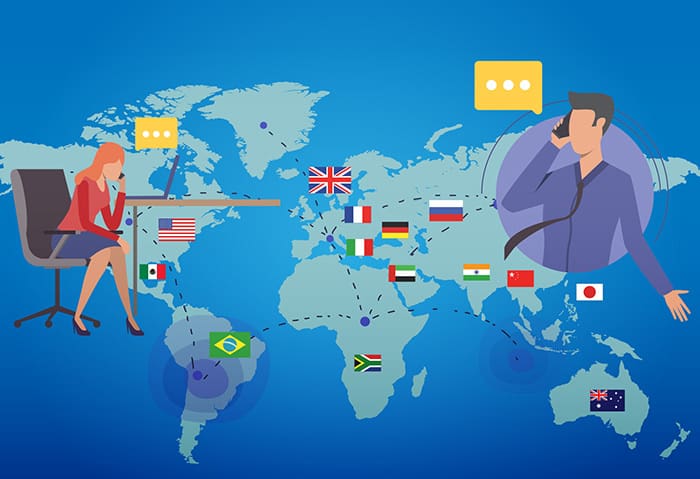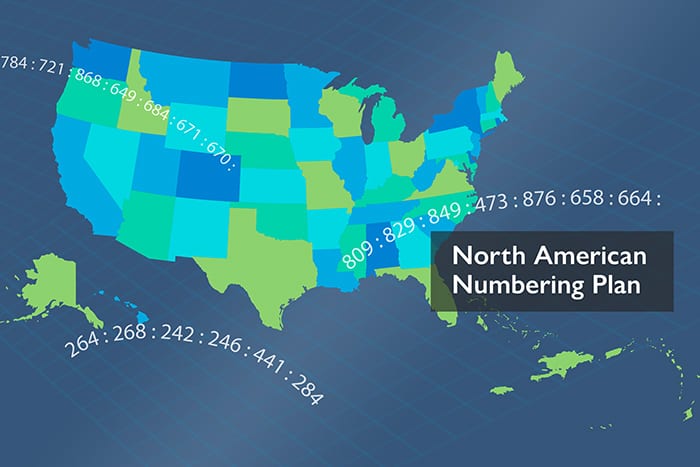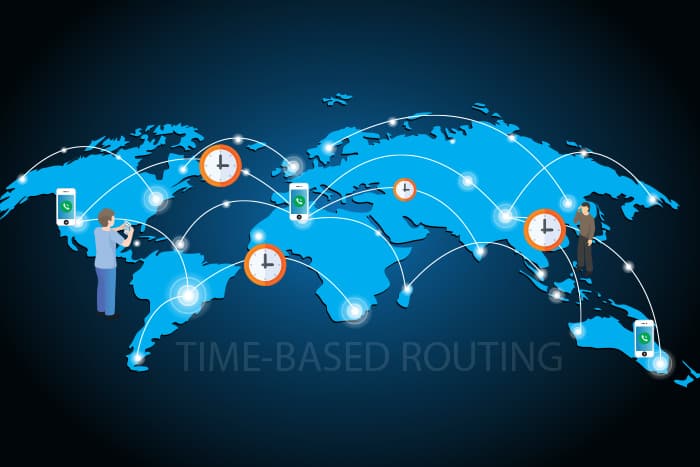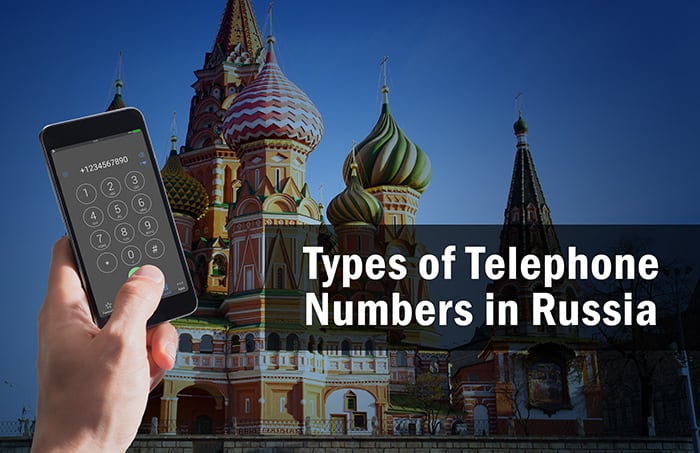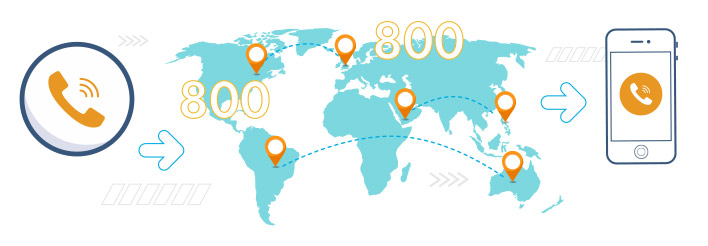A time comes in every business’ lifecycle when it needs to expand to new markets and regions in an attempt to keep growing. However, such a move can be overwhelming and cost-heavy, especially if not planned out strategically.
Here we will go over the different types of international expansion strategies with examples. Comparing these different strategies and entry modes can help you decide how to plan your business’ global expansion.
Topics covered
- How to Enter the Global Market
- Types of International Expansion Strategies
- Common International Expansion Entry Modes
- How Can Global Call Forwarding Help Your International Expansions Efforts?
Expanding Internationally: How to Enter the Global Market
Before we get started, why should your business even consider entering the global space? And are the benefits of expanding internationally worth the costs and risks? The short answer is, it depends. It depends on the kind of business you operate and how you execute your international expansion strategy.
When done strategically, there are many benefits to expanding internationally, including:
- Access to new markets and a diverse customer base
- Increased ROI and profits
- Access to local and skilled talent and workforce
- Global business recognition and reputation
- Establish regional offices
- Stay ahead of the competition
- Access to foreign investment opportunities.
And since you open new revenue streams, you can expect the ROI and profits to offset the costs spent in entering new markets. But for everything to fall in place according to plan, you first need a solid international expansion plan.
Global Markets Post-COVID-19
Expanding globally after COVID-19 can seem a bit challenging. But with the right plan and resources, you can enter a new market smoothly and cost-effectively and add a new customer base to your business profile.
The key to successfully expanding your business is to:
- Create a clear global expansion plan.
- Choose the right international expansion strategy.
- Identify the best entry mode for the new market.
Let’s look at each of these factors in detail.
How to Create an International Expansion Plan: 5 Key Steps
Before we compare the different types of international expansion strategies and entry modes, let’s look at the critical steps involved in creating a global expansion plan. This will give you context about what your business needs so you can identify the right strategies for international growth.
1) Pick the Right Markets to Enter
The first thought generally is to expand to a big, metropolitan area. However, certain businesses and industries do better in less developed and developing regions. Depending on your business type and stage of growth, identify the right markets and regions for your business to expand. And local market research can help with this.
Don’t know where to start? Here is a list of the best countries to expand to in 2021.
2) Conduct Market and Competitor Research
Then, you need to analyze how well your product or service will do in this new region. Is there a demand or market for your products or services? What is the quality of that demand? What demographics or portion of the population can afford to buy your products? How many competitors will you face? What is the demand for these competitors, and what resources do they have available? How does that stack up against your organization?
3) Understand Country and Governmental Regulations
Every country has its own foreign investment regulations. And so, before you start setting the groundwork for your expansion plan, you first need to familiarize yourself with these regulations. You can do so by visiting the country’s primary website or their trade website. For example, the United States has an International Trade Administration website where you can get information for US and international businesses. You can also learn more about these regulations on the country’s embassy websites.
4) Finalize on Entry Mode(s)
Next, you decide what entry mode is best suited for your business. Below we define and compare the different entry modes you can choose from.
You might even consider keeping a light footprint. That is, holding off on infrastructure and heavy investments till your foreign operations have grown and matured. You may decide to hire a few local employees and use cloud-based communication solutions to manage your operations. Have these employees identify untapped opportunities, conduct market research, and test the market gradually. This will help you save costs in the long run and ensure higher ROI.
5) Prepare Marketing and Expansion Plan
Once you have identified your markets and entry modes, you can start making a global expansion and marketing plan. This will outline your moves, budget, advertising campaigns, overhead requirements, and so on.
Learn more about global expansion best practices and planning strategies in our free global expansion guide.
Types of International Expansion Strategies
Here are the different strategies to expand internationally. But which one of these international expansion strategies is suitable for you depends on your business’s specific needs and goals. So educate yourself on the options available and make a decision accordingly.
1. Multidomestic Strategy
A multidomestic strategy focuses more on catering to locals within the new market. It is known as the strategy that sacrifices efficiency to improve the responsiveness of local requirements. Rather than forcing its parent country’s requirements and preferences onto the new market, it customizes its offerings and services to better meet the needs of the locals in the new market. As such, marketing and advertising efforts are geared towards the locals instead of taking a universal approach. A great deal of local research is required to execute a multidomestic strategy successfully.
Advantages of multidomestic strategies
- Diverse customer base
- Increased local responsiveness
Disadvantages of multidomestic strategies
- Uncertainty because of tailored and customized strategies spread across various countries
- Hard to achieve economies of scale that would help reduce costs
Examples of multidomestic strategy
- MTV customizing programming on its channels in different countries
- Heinz removing garlic and onion in its Indian ketchup recipe
- KFC selling tempura crispy strips in Japan and pastries with chicken in France
- McDonald’s offering multiple vegetarian options in India such as McSpicy Paneer, McAloo, and Green Chilli Aloo Naan
2. Global Expansion Strategy
A global expansion strategy is the opposite of a multidomestic strategy. The global expansion strategy is centralized—that is, the primary office controls it. This strategy maximizes global efficiency, so products and services are standardized and not tailored for local markets. The business units in each country are considered interdependent and respond to the primary office.
Advantages of a global expansion strategy
- Low risk for the firm
- Emphasizes economies of scale
- More opportunities to utilize innovations developed at a corporate level
- Effective for firms whose product is mainly hidden from the user’s view and where differences in local preferences is not an issue or requirement
Disadvantages of a global expansion strategy
- Trouble gaining a high market share in local markets
- Coordinating strategies and operations may prove challenging to manage
- Resources need to be shared and coordinating across boundaries and countries
Examples of a global expansion strategy
- Intel
- Microsoft offers the same product globally but with local languages
- Procter & Gamble (P&G) creates global brands whenever possible
3. Transnational Strategy
A transnational strategy combines the multidomestic and global international expansion strategy to create an international expansion strategy that caters to both global efficiency and local needs and responsiveness. Therefore, the two main characteristics of a transnational strategy are:
- High global integration
- High local responsiveness
To this end, balance and flexibility are key to executing a successful transnational strategy. And companies that do so perform better than competitors using a multidomestic or global expansion strategy.
Advantages of a transnational strategy
- High efficiency and low costs
- Wider reach
- Diverse market
Disadvantages of a transnational strategy
- Difficult to centralize and manage international offices
- Potential risk of alienating local customers
Examples of a transnational strategy
- McDonald’s offers custom menu items globally but has a cohesive global identity
- Unilever sells different brands in different regions but still maintains a singular corporate identity
4. Foreign Direct Investment (FDI)
FDI is when an organization enters an international market by investing in that country. Of all the international expansion strategies, this one is a good idea when demand and size of the market justify the investment. Some things to keep in mind when considering FDI:
- Your business can benefit from low-cost labor and cheap materials.
- You can avoid import duties when you manufacture locally.
- There may be import restrictions and limits for certain products.
Advantages of FDIs
- Retain control
- Low-cost labor, cheap material and manufacturing costs
- Diversified investors portfolios
- Provides financing and technology to developing countries
- Access to subsidies, tax breaks, and other concessions from the government
Disadvantages of FDIs
- High investment required
- High risk, related to change in policies against foreign companies
- Investors may have fewer moral attachments
- Potential unethical access to local markets
Examples of Foreign Direct Investment
- Mergers & acquisitions
- Horizontal FDI, where a firm replicates its entire organization in different countries
- Joint ventures
- Research & development
- Facilities
- Sales and customer support
- Manufacturing and logistics
- Retail and services
- Administration
- Greenfield investments
Common International Expansion Entry Modes
There are a few different ways to enter a new global market. And each of these international expansion strategies comes with benefits and potential issues. Here we will look at the various international expansion entry modes that your business can choose from when deciding how to enter a new market:
| Entry Mode | Definition | Advantages | Disadvantages | Examples |
| Direct Exporting | When a manufacturer or company sells directly to a consumer in another country. |
|
|
|
| Licensing | Limited, legal business relationship where a party (licensee) is given rights to use a brand’s (licensor) trademarks. The licensee pays the licensor a royalty fee to use trademarks of the brand. |
|
|
|
| Franchising | Agreement between franchisor and franchisee. Franchisor owns the business and sells the rights to their brand to a franchisee who opens a separate branch under the brand’s name. |
|
|
|
| Partnering & Strategic Alliance or Joint Ventures | Strategic alliances with a local partner. Or joint ventures where two or more parties make a business agreement to pool their resources together. |
|
|
Alliances
Joint Ventures
|
| Mergers & Acquisition (M&A) | Consolidation of two businesses to increase market share and profits. M&As are complex processes and need preparation and analysis. |
|
|
|
| Greenfield Ventures | Launching a new, wholly-owned subsidiary in a foreign country by building its facilities from the start. This way, a business enters a new market without the help of other companies already there. |
|
|
|
How Can Global Call Forwarding Help Your International Expansions Efforts?
Global Call Forwarding has helped thousands of businesses enter new markets and regions cost-effectively. Whether you plan to open regional offices or want to conduct operations virtually, our cloud communication solutions can ensure that your business communicates with team members and customers efficiently. Our high-availability network and partnerships with local, regional providers enable us to offer our customers cloud phone numbers (local and toll free) from more than 160 countries worldwide. And our phone numbers come equipped with advanced call management features such as call routing, automated voice response, softphones, and more.
We can support your international expansion strategies and help you enter new markets with a light footprint and low overhead costs. And as your business grows, you can add more service lines and features to our highly scalable solution.
Expanding internationally is a big step, and we are here to make the process less stressful when it comes to business communication. Want to learn more about how we can help you set up more points of contact in different countries and regions? Speak with our representatives today or chat with us online!



